For the Love of all that is Dear, PLEASE let's save the antique metal BEDS!
Antique beds are a dying part of early American culture. Save them please and whatever you do do NOT put them in your garden as a whimsical "flower" bed!
Portland, Oregon. November 14, 2022.
Yes, metal antique beds. I love them. I adore them. I go coo-coo for them.
I look at catalogs and dream of the particularly fanciful ones that are often one of a kind frames, (those ones are generally the French made frames) and I dream about buying one, or two, or three, or more. Problem is, they’re often $5,000 per frame, so that takes care of that. But if you’re lucky, you can still acquire a frame or two. You just have to keep your eyes open.
I have a website, Calico Antique Metal Bed Restoration and Sales. You can contact me there with questions.
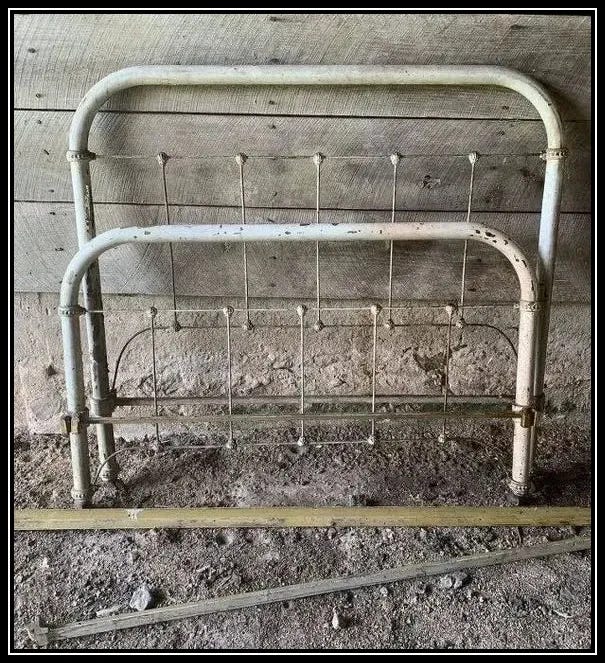
Facebook Market place is a great place to start. In the last five months, I’ve acquired nine frames, for a total of ten frames I now have, which I will be restoring. Each one is unique and special, with most being American bed frames and three being what I suspect are English frames, one which I know is an English frame, as it was actually shipped from England to Oregon less than ten years ago, according to the seller who I bought the frame from.
There are many passions in my life. I do have passions, things I prefer writing about, things I enjoy collecting, and of course the various forms of flora and fauna that I enjoy giving life to, for the sheer enjoyment of the beauty they provide. To name just a few of the more mundane forms of plant life I love, lets start with flowers. To list just a few, there are of course Roses. They must be heritage roses, also known as heirloom or antique roses, not the common modern roses lacking scent. Then comes Lilac, then Daphne Odora, and of course Lavender. All the pretty things that smell heavenly.
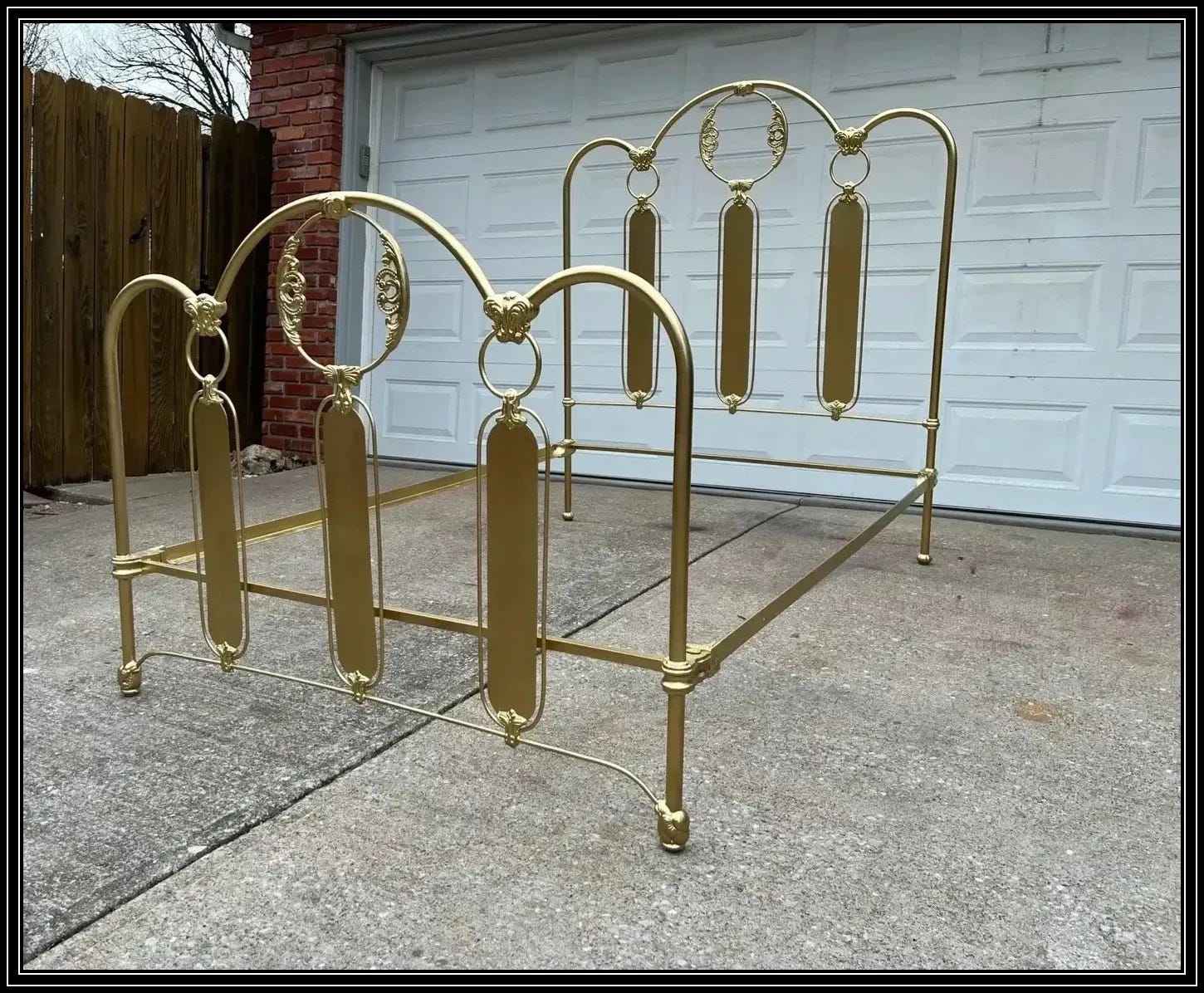
And I love to collect antique rings, decorated with silver filigree, of which I have only a couple. Old things. I love old things.
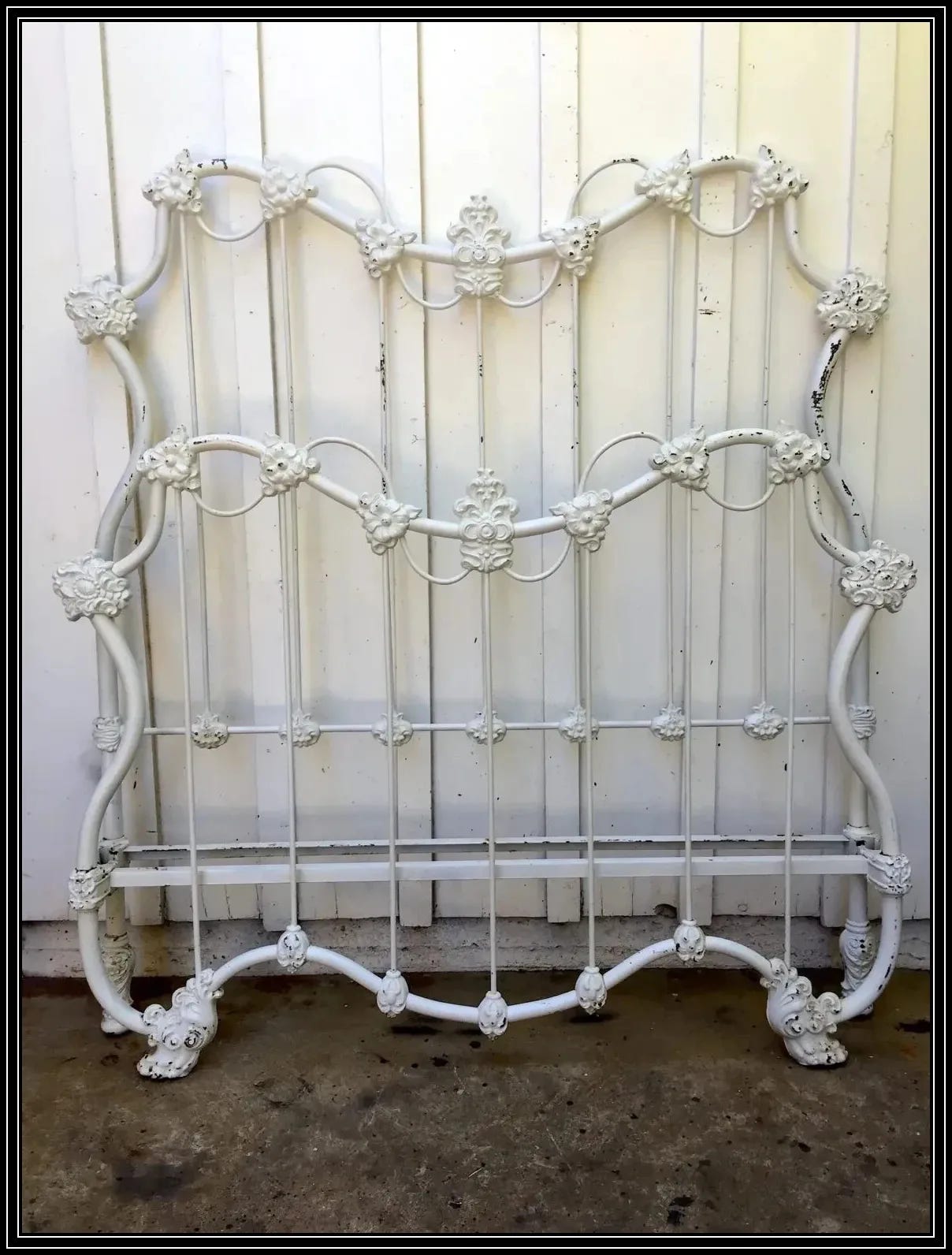
And one cannot forget BOOKS, contemporary, antique and vintage. I have over 90 antique books, but they’re not valuable. Valuable antique books are judged upon rareness, (well perhaps I have two or three of slight value) but the vast majority of my antique books are not technically valuable. To me, however, my antique books are priceless, simply because they’re old and the stories whimsical and sometimes even amusing.

Because to hold a book in your hand, a fragile thing of beauty, offering up the perspective of an American or European life from 100 years ago is a precious thing. To wonder about the lives that have been touched by that book, the lessons learned, the hands that held the book, it becomes quite an experience contemplating the elusive nature of time and how it dissipates, to borrow an old cliche, like sand through an hourglass.
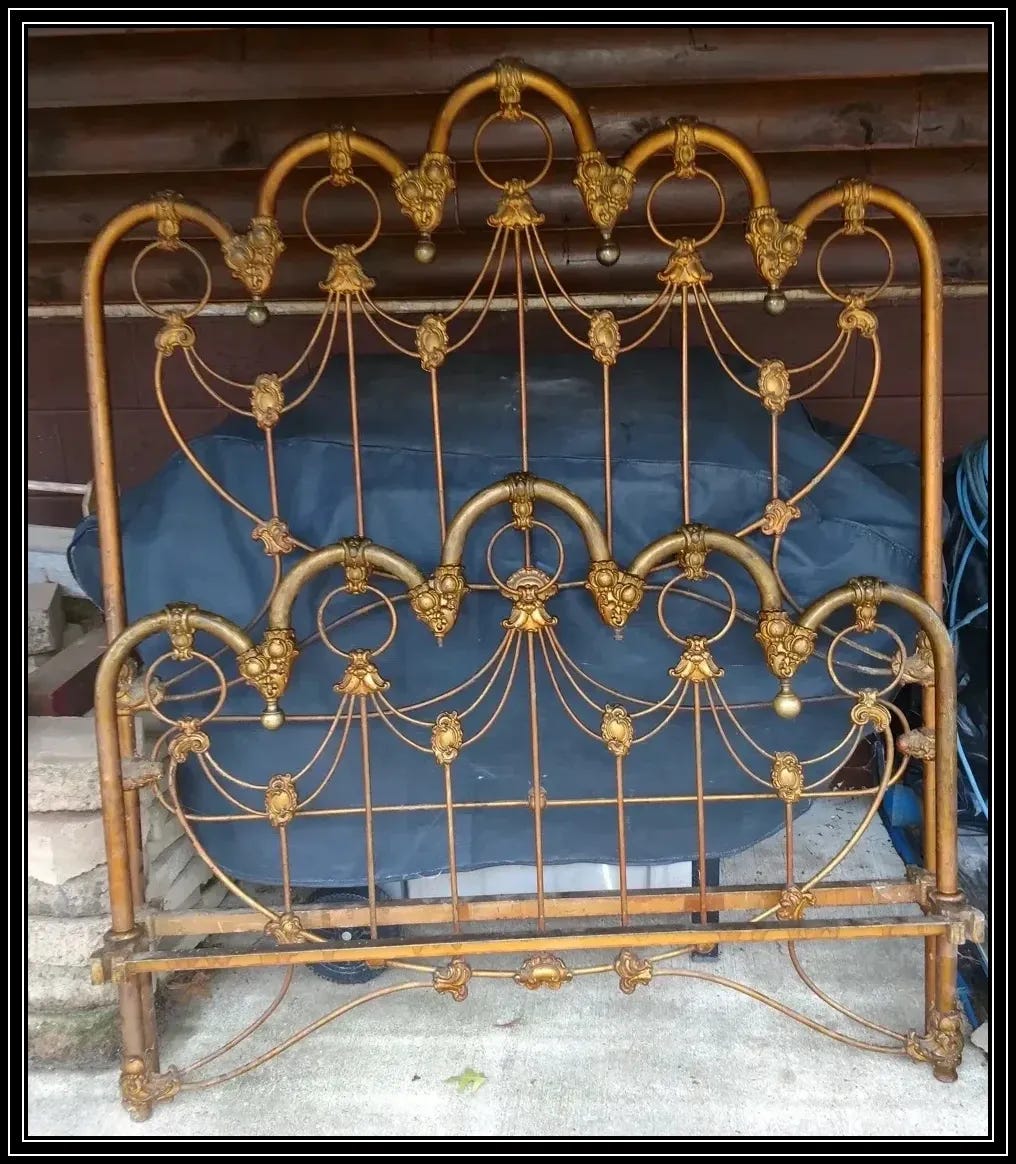
Antique books must be 100 years or older, vintage 50 years or older, so among the 1,200 or so books in my home, about 90 of them are antique and/or vintage, though mostly, they’re antique. Old books have been a longtime passion.

But I also love metal BEDS. I have since I was a child and then later a teen, when I inherited my father’s old single cast iron bed, with four brass knobs, when I was sixteen. I wish I knew where he’d gotten it, but I wager it was a gift from my grandmother.
Matilda Coleman Griffin, my paternal grandmother, loved to ‘antique’ herself and had a house on Capital Highway, near the Multnomah Village, (where she lived with my grandfather Edwin for over 30 years) which was full of valuable antiques. This included dozens of extremely valuable antique dolls in glass and wood display cases that she repaired herself and sold at huge profits to Portland collectors. She also had a couple of old metal beds, and I remember looking at them when I was a child, wondering about them, knowing they were old and from a different world that no longer existed.
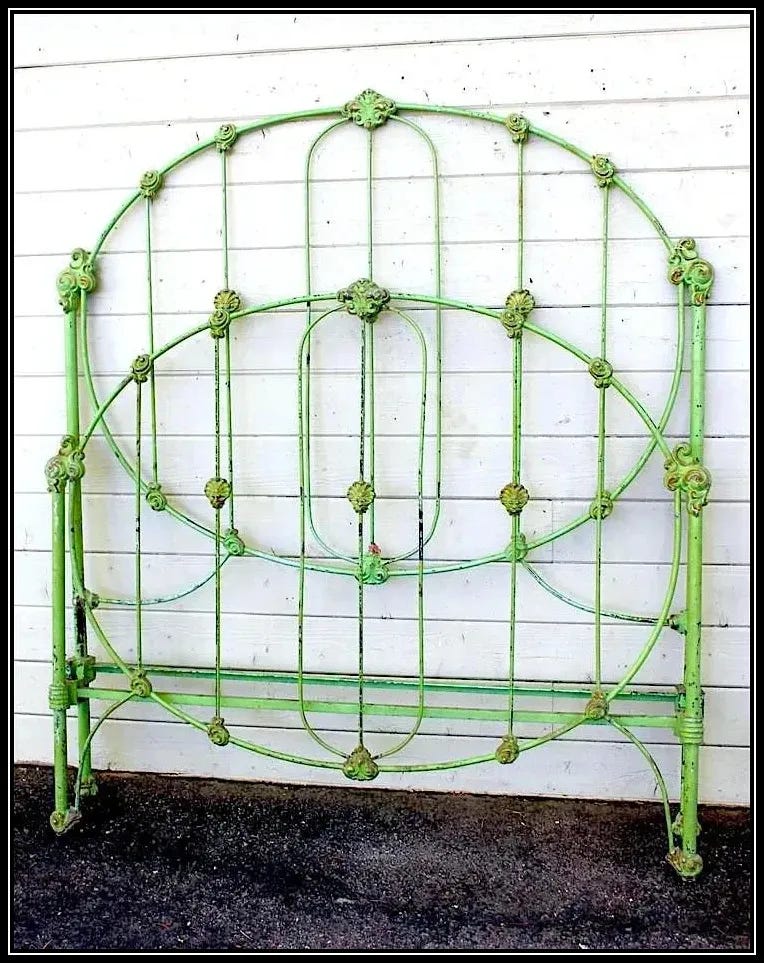
Back in 1991, I found an antique double bed. The second metal bed of my collection. It was cast iron, probably from around the turn of the century, and I was so thrilled to have it. It had spent 30 years in a cold garage, near SE 34th and Belmont street, forgotten behind some large metal sheeting of some kind. A friend had died and it came to me to empty the old man’s house and garage, as he had no living family. While I was sad that old man Hubert Hanks had passed away, dying in his sleep at the age of 77, I took his old cat, Champ and took care of him, giving him a home, as I’d promised Hanks I would do. And I emptied out his house and garage as well as I could. I’ll never forget the moment I pulled the metal sheeting away from the garage wall and saw that gorgeous old metal case iron frame.
I literally gasped and said: “Oh my gosh! Look at that!”
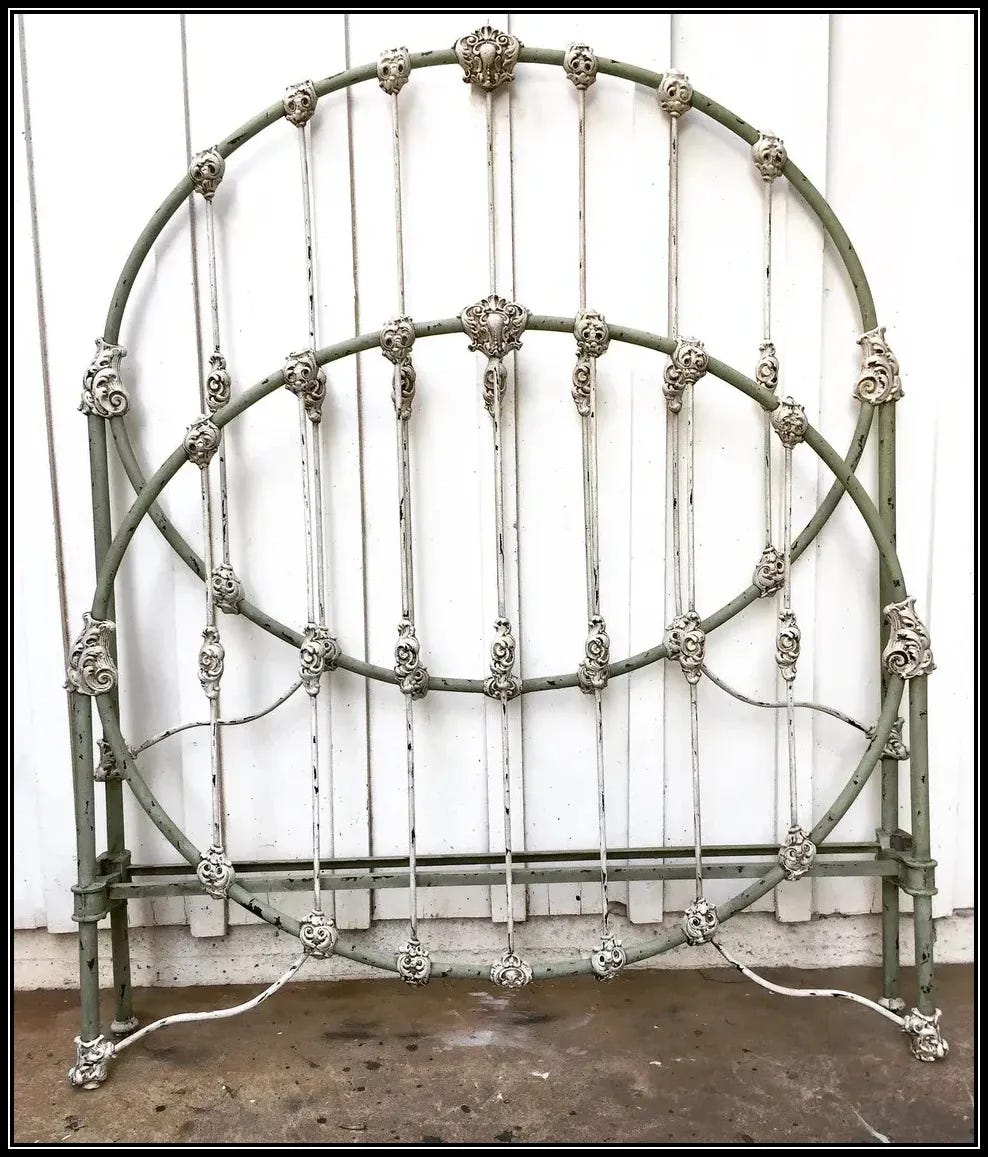
I had the old frame professionally stripped and then I painted it white and gold, with cans of spray paint. Definitely a mistake on my part. I should have contacted a professional furniture painter, and had it painted in a way that utilizes electrostatic technology. The paint goes on thicker when its painted in this way and it clings to the surface of the metal. It can’t be chipped or damaged in the way that it can if its just “hand painted” with a brush or spray can.
But back then, I was young and full of optimism. I could do it I said to myself. Well, I was wrong, but I still have the bed and have used it on and off for years. When my daughter was a teen, she used it too.
Though there are ways you can repaint a metal bed by hand, it just takes multiple coats of paint and 2–3 coats of clear varnish that goes over the paint. This process is doable but requires considerable time and effort and patience.
Then in the cold of February, 2008, my father died, at the age of 87, peacefully, in his sleep, one month shy of his 88th birthday. My sister, who was the executor of his “estate” decided to give me his glorious double size brass bed, also an antique, that we had all grown up seeing. The bed he got after my parents divorced in 1971, when I was five. I have the brass bed in storage and hope one day to completely refurbish it, which is an entirely different process from just painting.
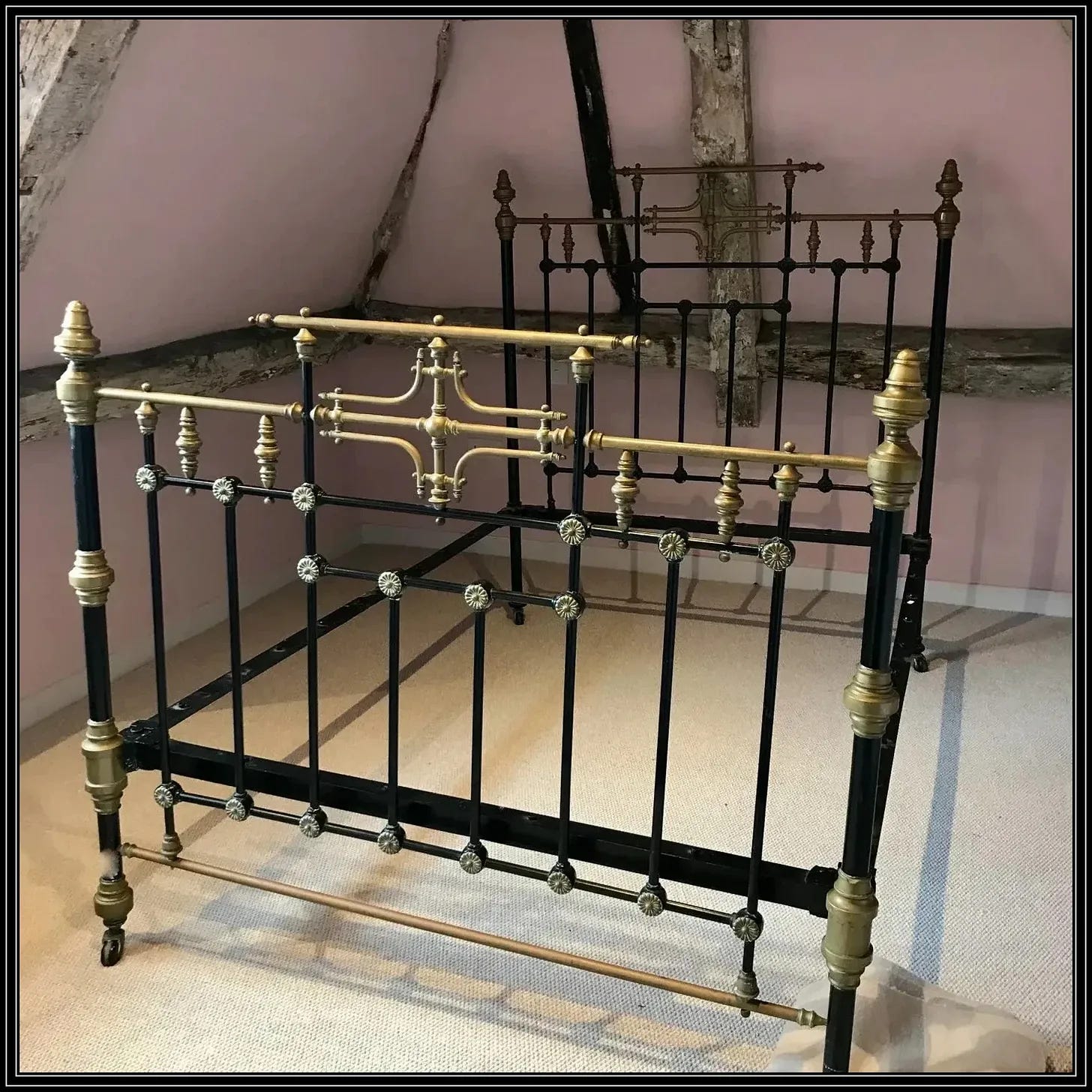
So, for many years, I carried those three precious beds with me, wherever I went. I was proud to own them and they were undoubtedly the most valuable possessions I did own. I’ve always loved a beautiful bed, why I don’t know but there is nothing more alluring and visually pleasing then a lovely bed, particularly if its metal and antique made up with silk ‘crazy quilts’ and fine cotton sheets in pastel colors.
The history of bed making has always fascinated me. The more mundane history of beds from the past 100–200 years I find intriguing, and even so far back as to ancient times. The history of beds and bed making has always seemed to me to be important information that more people should study and think about if they want to more thoroughly understand their culture.
Lately, in the past few years there has been a disturbing trend going on. On numerous social media sites, you can see people selling or giving away perfectly viable antique metal bed frames so they can be used to create “flower beds” in gardens. The photos of these monstrous conversions of a still useful bed frame to that of a “flower bed” literally sends shivers down my spine.
Shivers of disgust and outrage. This is NOT what they were created for. This is NOT the fate that any metal antique bed should be subjected to!
I cringe every time I see beautiful antique metal cast iron beds being misused and abused in this absurd way. I literally cringe. It is a crime against beauty and a crime against the idea of utility to take a bed that is 100-years-old (or less or more for that matter) and because it may have slight damage, condemn it to the extreme cold and heat of the outside elements simply to create am image of questionable whimsy! And for what, a laugh?!
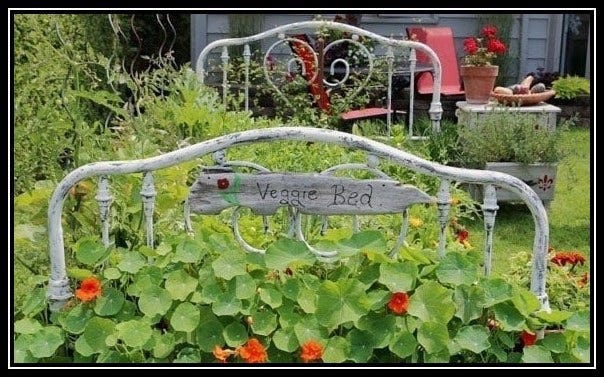
“Oh, look! Ha ha, look, I made a flower bed out of my granny’s old antique bed!”
No! No, no and NO!
Please don’t do this to an antique bed frame. And don’t encourage your friends or family to do it, either. Keep the metal frame indoors, safely away from the elements or give or sell it to someone you know who will cherish it, (LIKE ME) or someone else.
These kinds of bed frames were often “over made.” which means the standards to which they were made were excellent. The beds easily last 100 years or more and can easily withstand the weight of a 180 pound man and if they are protected from the elements history has shown us that the beds can last 200 plus years.
*Please consider this if or when you find yourself in possession of an antique metal bed frame.
If a person weighs more than 180 pounds, there are other things that can be done to make the frame of an antique bed viable without putting undo pressure on the metal frame itself, which can cause the frame to lean inward, meaning the head-board and foot-board will lean into each other, which clearly is not a good thing for the integrity of the iron.
Ways to modify an antique bed so it can withstand excess weight of 180 pounds can easily be done by creating wooden supports below the area where the box spring and mattress go. This provides additional support for the box spring, and mattress.
The following photograph below illustrates perfectly how this can be done, to relieve pressure on the actual metal frame itself, while allowing the beauty of the frame to be displayed. This is currently a common way for people to use a lovely antique metal bed frame without compromising the integrity of the metal structure and the designs, which includes the ornamental castings. These castings, back in the 1800’s were referred to as “chills.” The chills were the intricate design elements that held the bed frames together, by securing the interior iron rods and tubing. The quality of these castings are what determines the value of a metal bed frame and how collectible it may or may not be.

Antique metal bed frames provide a unique look into the cultures they come from. Most often metal bed frames were manufactured in France, England and America, with the French and English beds being the most ornamental and opulent and the American beds being the most streamlined and linear in appearance, particularly during the Great Depression, when styles changed.
With the 1st World War, from 1914 to 1918, the production of metal beds was halted in the United States. This was because our nations need of all available iron for armaments and the war effort became the number one priority. So for a few years metal beds became a commodity in themselves and perhaps even more important. But at close of the war, four years later, production resumed.
After the war, things had changed and more companies were forming as it was a lucrative business. They found it more financially sound to relocate to the places where metal was actually being produced. There were a few foundries in places like Wheeling, West Virginia, Chicago and of course Pittsburgh Pennsylvania that made metal bed frames. These companies took real pride in their designs, which they were constantly tweaking and changing.
During this time in America the majority of iron produced was done in the Pittsburgh steel mills. It was more realistic for small owned foundries to relocate close to the source materiel they would need to make iron beds, reducing the overhead costs.
Metal beds became more popular than wooden beds because they were considered more “sanitary.” This was during a time when being clean and “sanitary” was important to people, particularly people in America.
Being clean often meant not contracting a viral disease like influenza, or the bacterial infections of scarlet fever, or diphtheria, or other airborne diseases. Wood beds were also considered less desirable because they could be damaged during transit, to the point that they were broken and unusable. Wood beds could also be destroyed, by water or fire, but metal beds could survive almost anything. A flood, even a fire. The only thing a metal bed can’t survive, without being damaged, is excessive weight placed on any part of its more delicate frame that might not be as strong as the outer tubing. Metal frames also cannot withstand years out in the elements.
So, not only are metal bed frames works of art, they are also essentially indestructible, for the most part and within reason.
Here are some additional helpful links which can provide more information on the fascinating history of metal beds and how lovely they are, truly being exquisite works of art. Many, particularly the French frames, are one of a kind designs wherein only a small number were molded, or even in some cases, only one frame created for mostly aristocratic families, where the mold was later destroyed.
This is a link on Cornish beds from the UK… and Another link on collectible Cornish beds… and this pertains to Charles Progers iron beds here at this link…
This final link, “1st dibs” shares information on the incredible price of restored beds. So, if you have found an old metal bed, don’t just presume it has no value. They can last for centuries. Don’t presume since it has slight rust, or the paint is chipped off in places that the frame itself is worthless and should be relegated to your back garden to decorate your potato or carrot patch.
That’s not why these beds were made. Think about what the frame could look like once fully restored, which doesn’t take much work or effort at all. And it you can’t bring yourself to restore the bed yourself, contact someone who will.
*The day before yesterday, on FB Marketplace, I saw that a sweet young woman was giving away for free a lovely old cast iron, American made bed. The bed included headboard, foot-board, both side rails, and the original wheels and original brass knobs. Her notice was active for over 48 hours. She told me I was the only person who expressed any interest.
Truth be told, I literally jumped at the chance to pick up a free metal bed, and my husband Don and I drove to the young woman’s home north of 50th and Division street. The bed belonged to her grandmother, she told me, and as I already knew, was over 100-years-old, but she just didn’t want it anymore. We picked up the bed, carefully loaded it into our Jeep, brought it home and I could not be happier. I have a worthwhile project and will turn this old gem into a thing of beauty, and it will last another 100–200 years, or perhaps longer, who knows!
*One caveat to seriously consider is that these old beds often have to have a custom made box-spring made for them. You can use double mattresses but a regular double box spring will not fit into the grooves where the side rails come together. Because of this, you need to contact the companies who specialize in custom box-springs and mattresses.
One great company is called Orange Mattress Custom Bedding, located in New Jersey. Mindy can help you order your custom box spring, and mattress for your antique frame. Their website pages for box springs can be accessed here at this active link. You can also email mindy@mycustombedding.com, or call at 1-800-761-1100.
Cast iron metal beds are as much a part of American culture as any other intriguing wood or crystal antique that has value. Please treat them with the respect and care they deserve and they will reward you for decades as the things of beauty and grace that they are!
~Theresa Griffin Kennedy

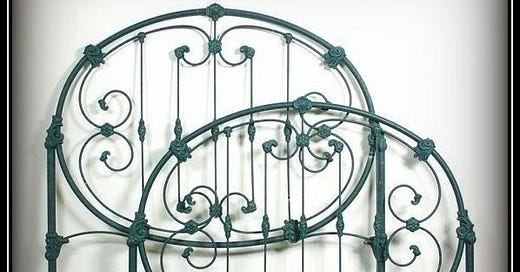



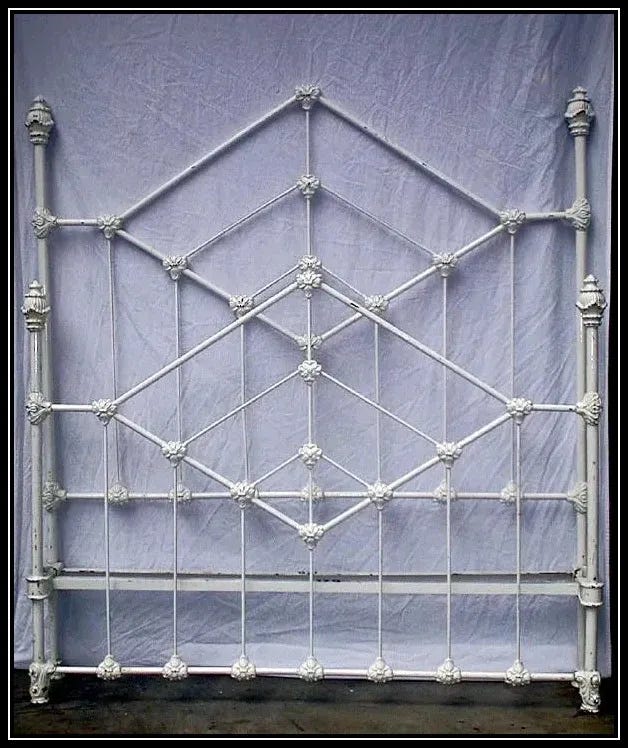
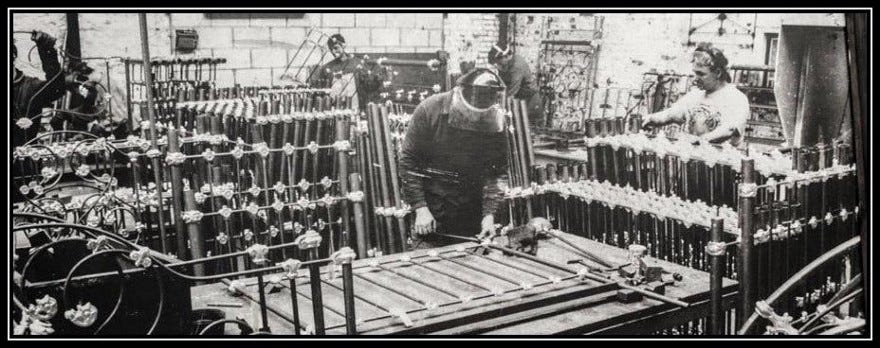
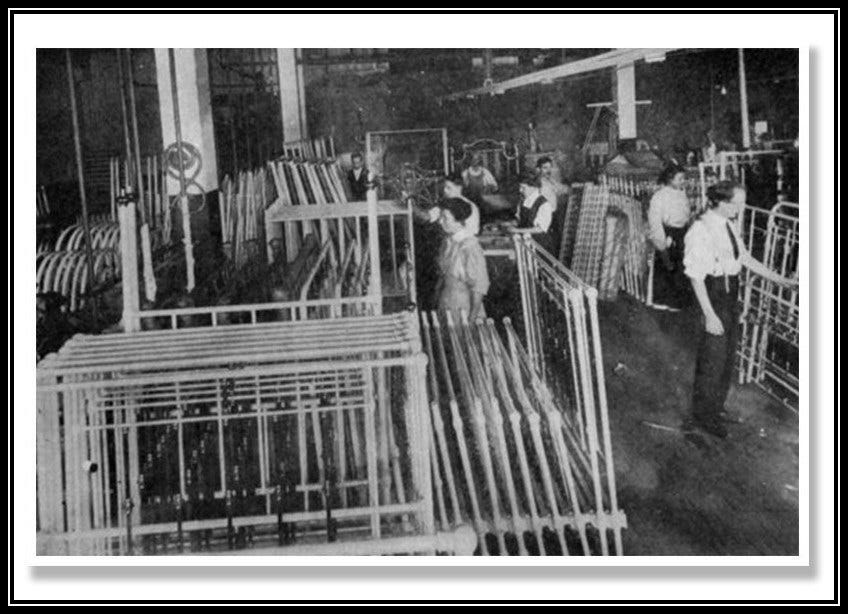
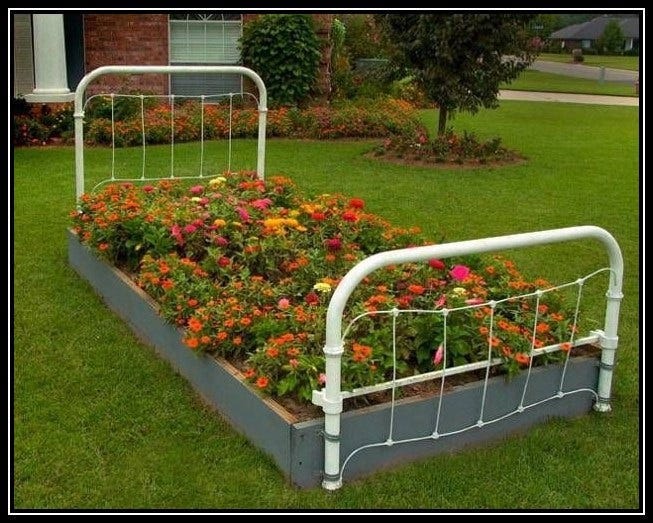
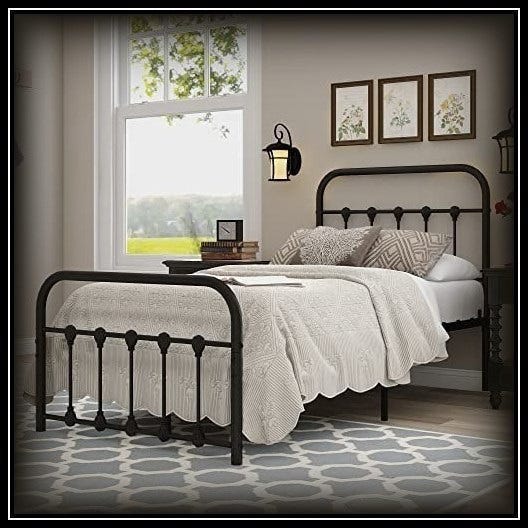
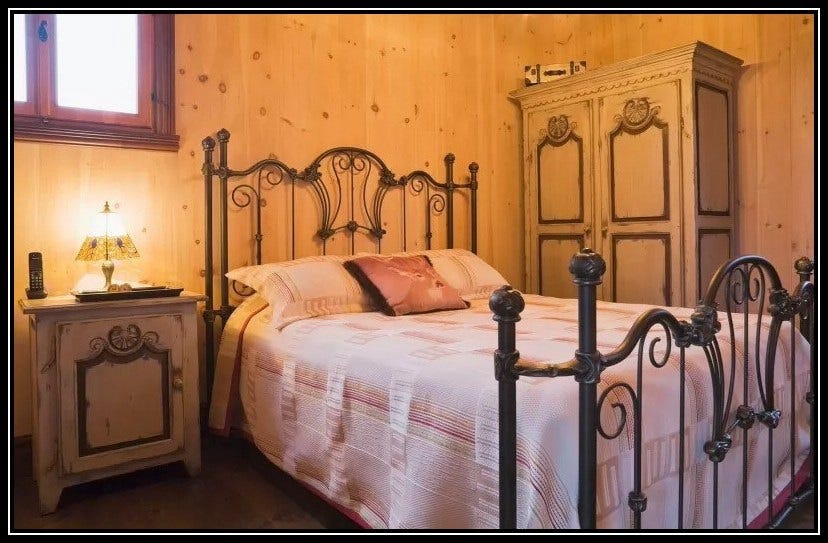
Haha, this was a nice reprieve from the heightened news cycles this past week :). And btw, metal beds are a staple in my house (and my parents house) as well 🙌